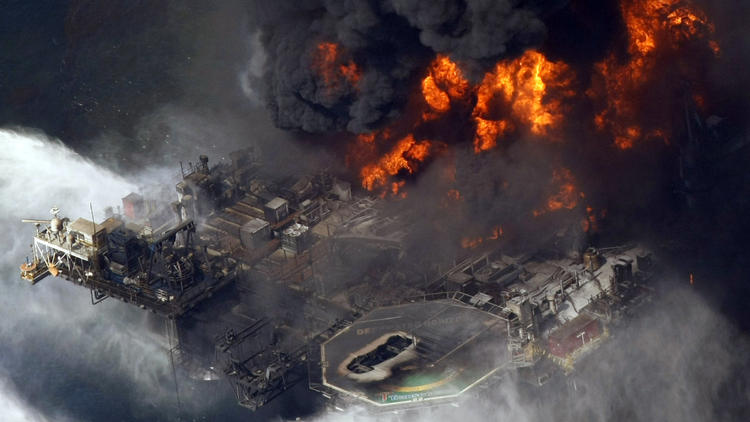
Image: BP's Deepwater Horizon oil platform burns in April 2010, fouling the Gulf Coast: Is it responsible for a massive die-off of dolphins? (Gerald Herbert / Associated Press)
latimes.com - February 16th 2015 - Michael Hiltzik
In the years since its Deepwater Horizon oil spill befouled huge stretches of the Gulf of Mexico, oil giant BP has honed its skill at cherry-picking scientific studies to duck responsibility for the spill's environmental impacts.
Its latest effort concerns a study of a massive die-off of bottlenose dolphins in the gulf from 2010 through June 2013, occurring mostly after the April 2010 Deepwater Horizon blowout caused the worst oil spill in history. The peer-reviewed study, led by Stephanie Venn-Watson of the National Marine Mammal Foundation in San Diego, was funded by the National Oceanic and Atmospheric Administration and published last week in the open-access journal PLoS One.
Problem, Solution, SitRep, or ?:
Recent Comments